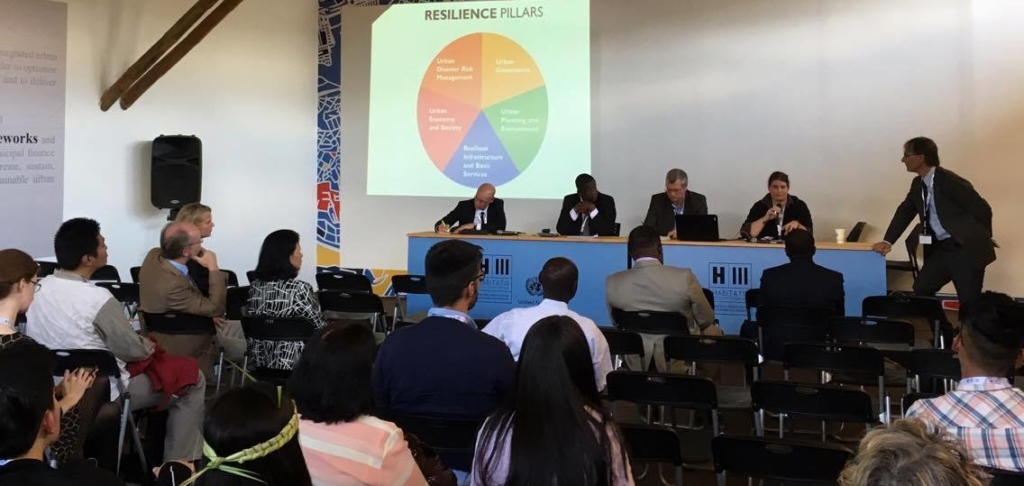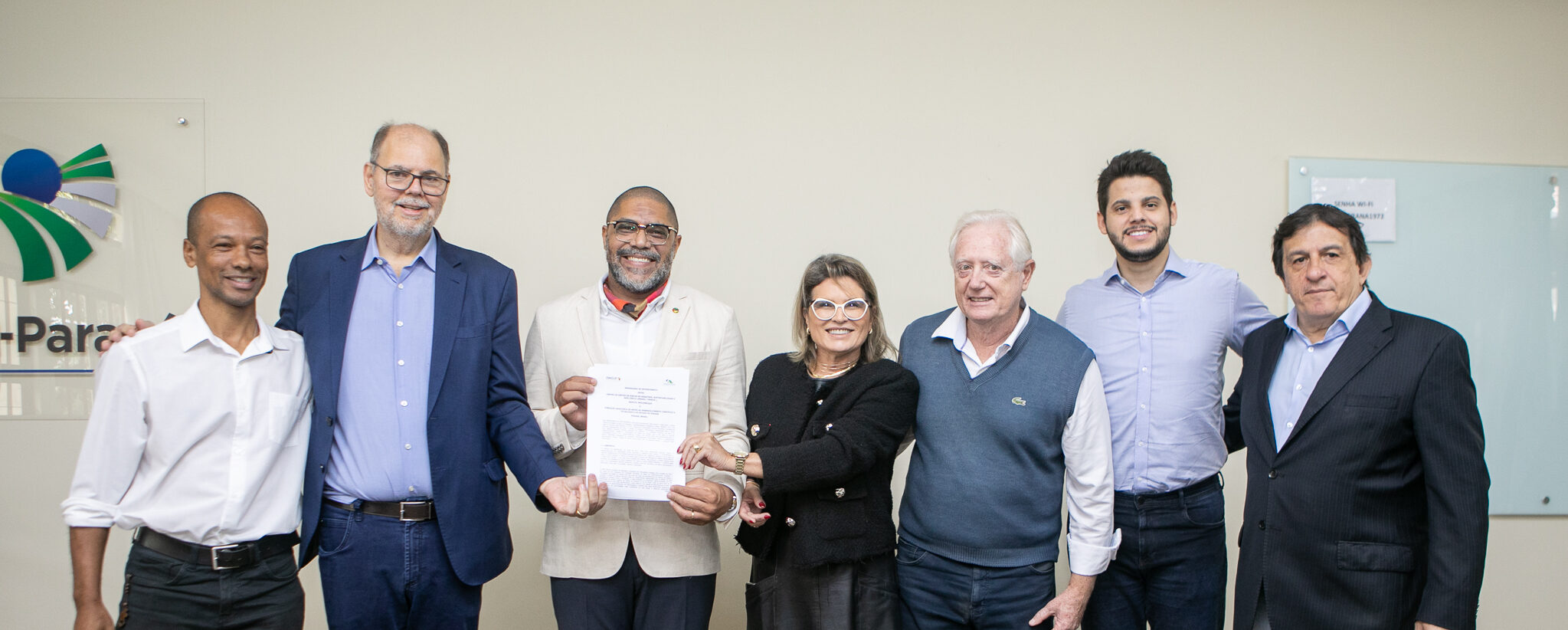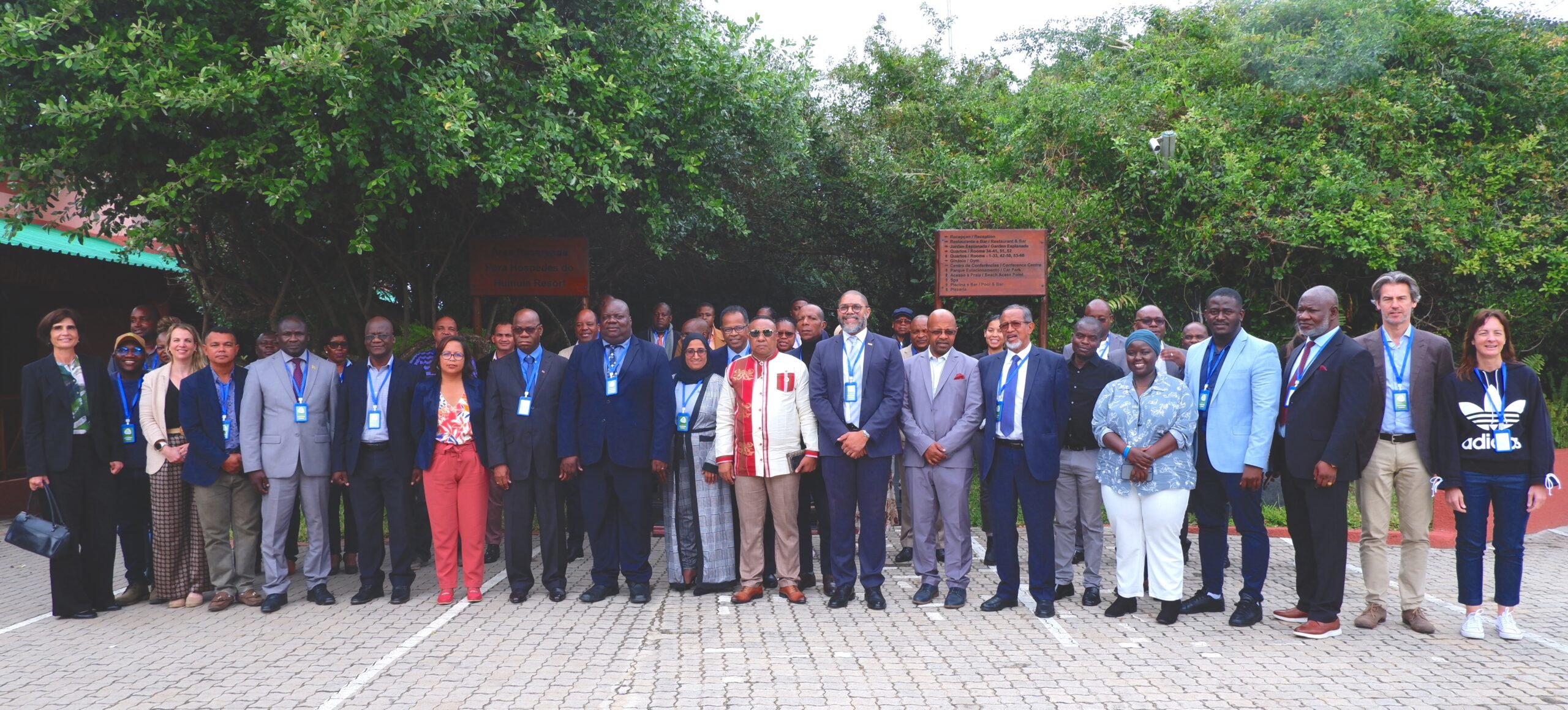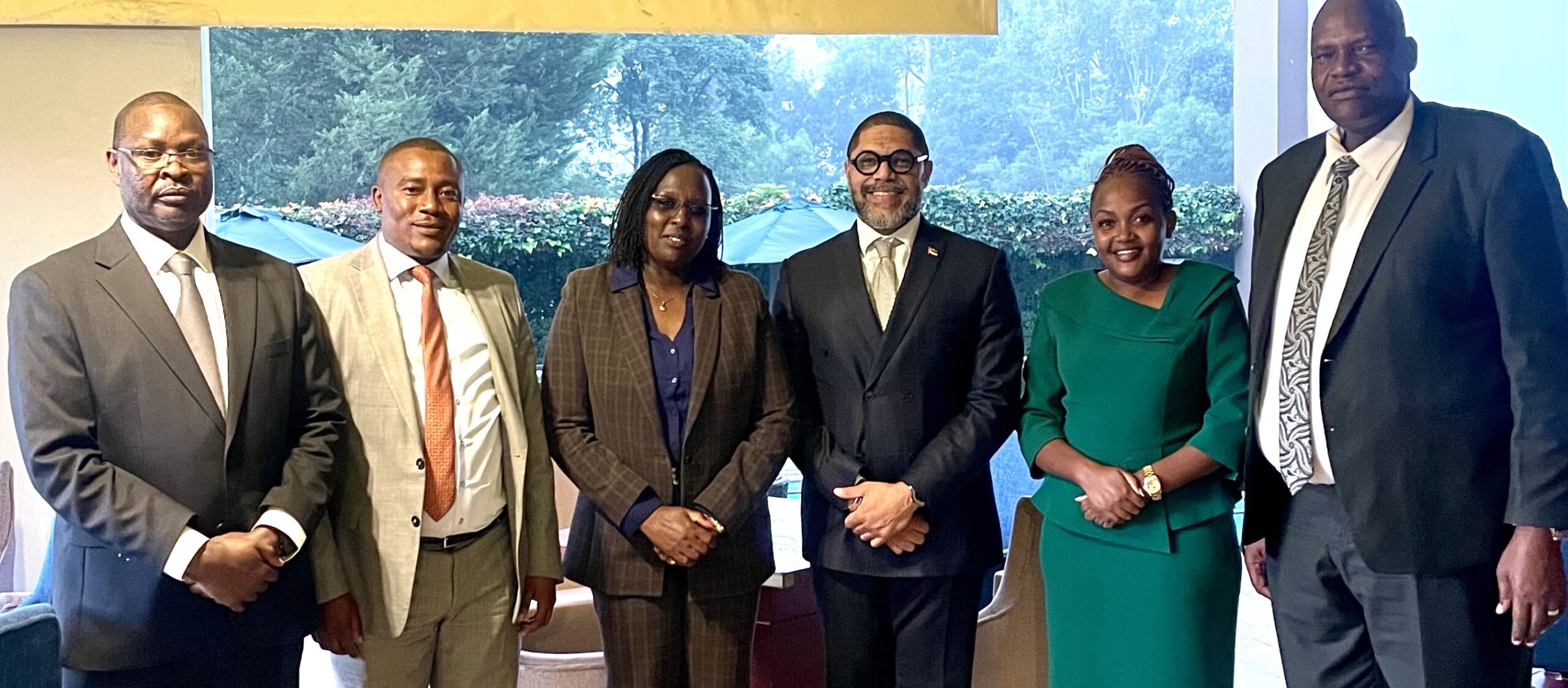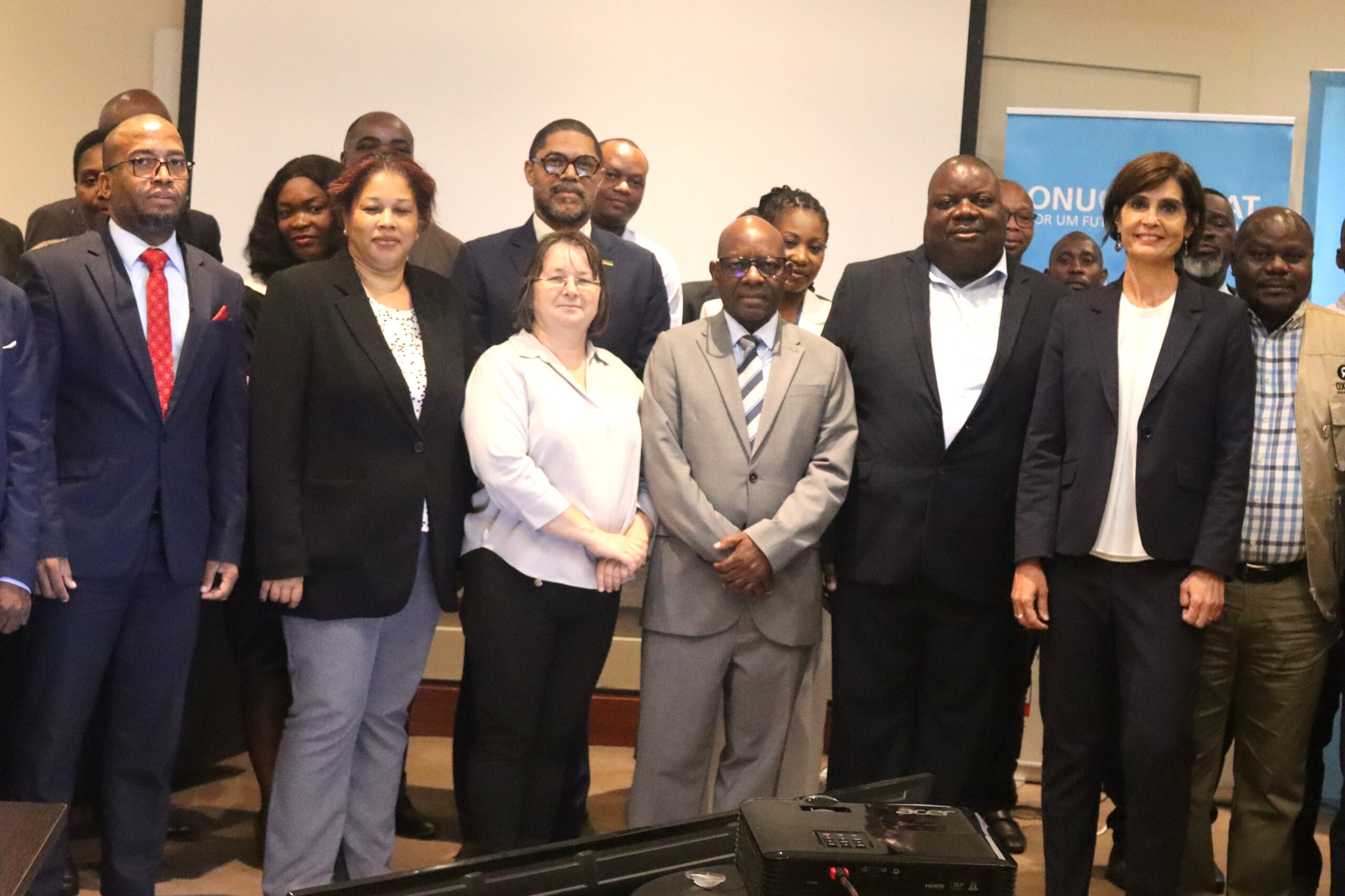DiMSUR’s team presents its Resilience Framework for Action Tool during Habitat III Conference in Quito, Ecuador
The session entitled “The Power of Participatory Resilience Planning in Fast Growing Urban Settlements: Experiences from Africa” was presented by DiMSUR’s team and invited panelists during Habitat III, The United Nations Conference on Housing and Sustainable Urban Development in Quito, Ecuador.
DiMSUR’s side event was a 1,5 hour panel discussion that occurred at ONE UN Pavilion during the first block of the first day of Habitat III, on October 17th. Despite a lot of participants were still queuing to make their credentials for Habitat III, the panel discussion had 70% of the room full. The audience came from a variety of backgrounds: academia, governments, NGOs, UN, and other international organizations.
The panel discussion at Habitat III is an important step to promote DiMSUR’s best practices on building resilience in Southern Africa. The event disseminates the lessons from the innovative approach of CityRAP Tool, made to fit the needs of low-capacity small, intermediate cities and neighborhoods from larger cities in developing countries. It is also an important opportunity to network and receive feedback from different stakeholders.
The panel discussion
Firstly, Mathias Spaliviero, Senior Human Settlements Officer at UN-Habitat’s Regional Office for Africa (ROAf) and part of the founding team of DiMSUR, introduced the main issues related to urban resilience and risk management faced by developing countries, highlighting the impacts natural and man-made hazards may have in fast growing small and intermediate cities in Africa.
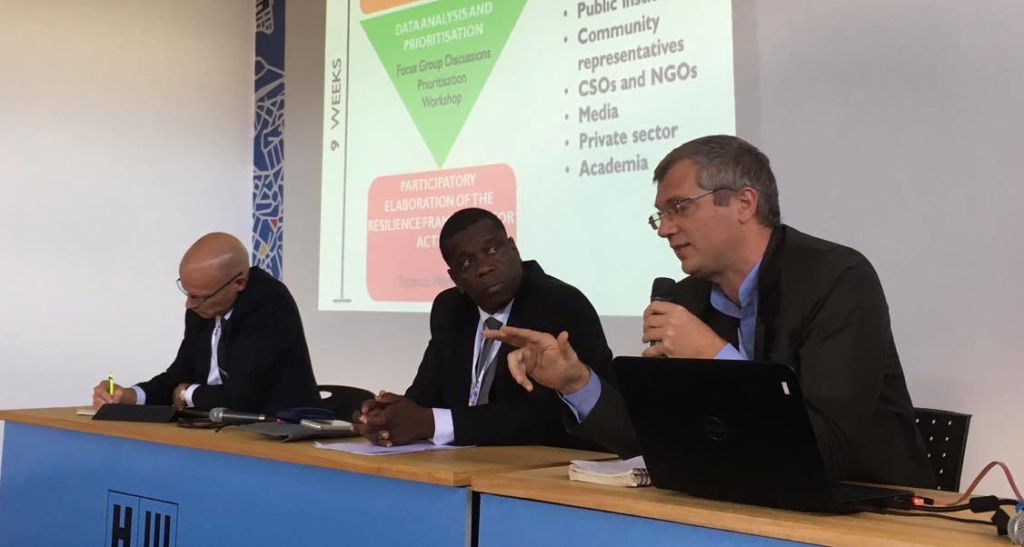
Spaliviero presented CityRAP tool participatory approach and methodology to the audience. He focused on the stronger features of the tool: local ownership and engagement, flexibility and adaptability to different realities, mainstreaming local knowledge and solutions.
The second panelist, Shona Peterson from Urban ARK (Urban Africa: Risk Knowledge, a research and capacity building programme funded by DFID and ESRC) provided a more academic perspective to participatory resilience building. Peterson emphasized the good results from CityRAP tool in starting the process of resilience building in the city of Chokwe, Mozambique. The panelist explained the role of participation and its comparative advantages in cities of limited capacity.
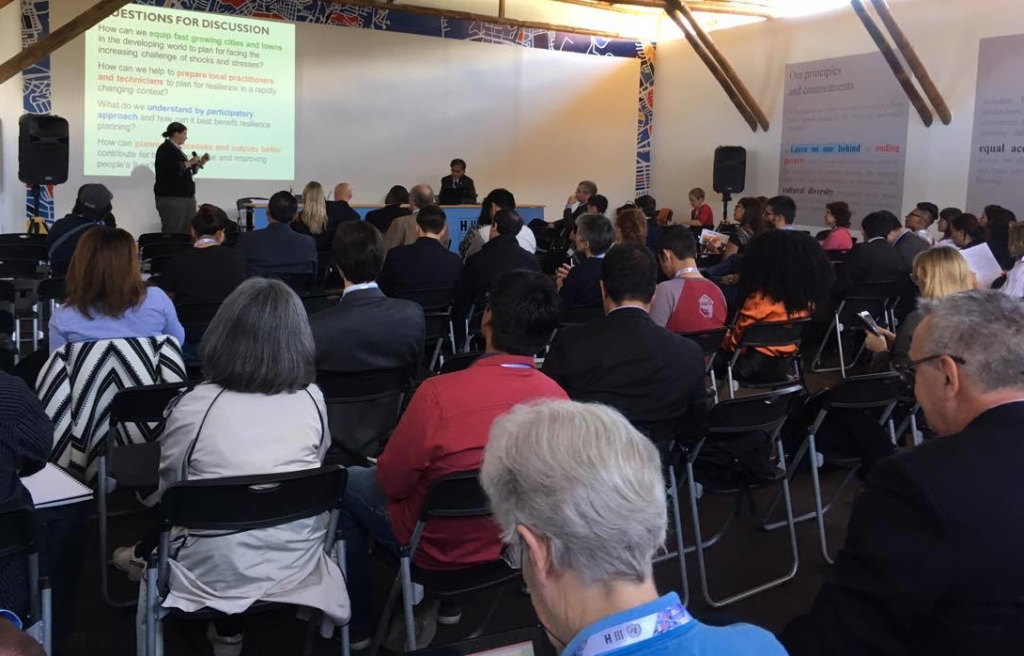
The third panelist was Daviz Mbepo Simango, mayor of Beira, the third largest city in Mozambique, who told the audience the experience of building the resilience through participatory activities from a city perspective. Simango presented cases of cooperation with external partners, such as The Netherlands, to build the resilience of Beira, which is a coastal city extremely vulnerable to the sea level rise.
Finally, the fourth panelist, Mr. Henk Ovink, Special Envoy for International Water Affairs from The Netherlands, mentioned the partnership between the government of The Netherlands and Beira, referring to the mayor’s previous talk. Ovink also highlighted the complexity of the concept of resilience and resilience building, considering it as a constant and progressive process. The panelist recognized the CityRAP Tool as a sometimes necessary simplification of the complex resilience concept, seeing it as an entry point to the challenge of how to mainstream urban resilience in settlements with high demand but limited capacity in the developing world.
With moderation of Mr. Claudio Acioly, head of Capacity Building at UN-Habitat, the panel discussion counted on extensive interventions from the audience. One of the inputs from the audience was on the possibility of inclusion of aspects of climate predictions, modeling and forecast on the tool methodology.
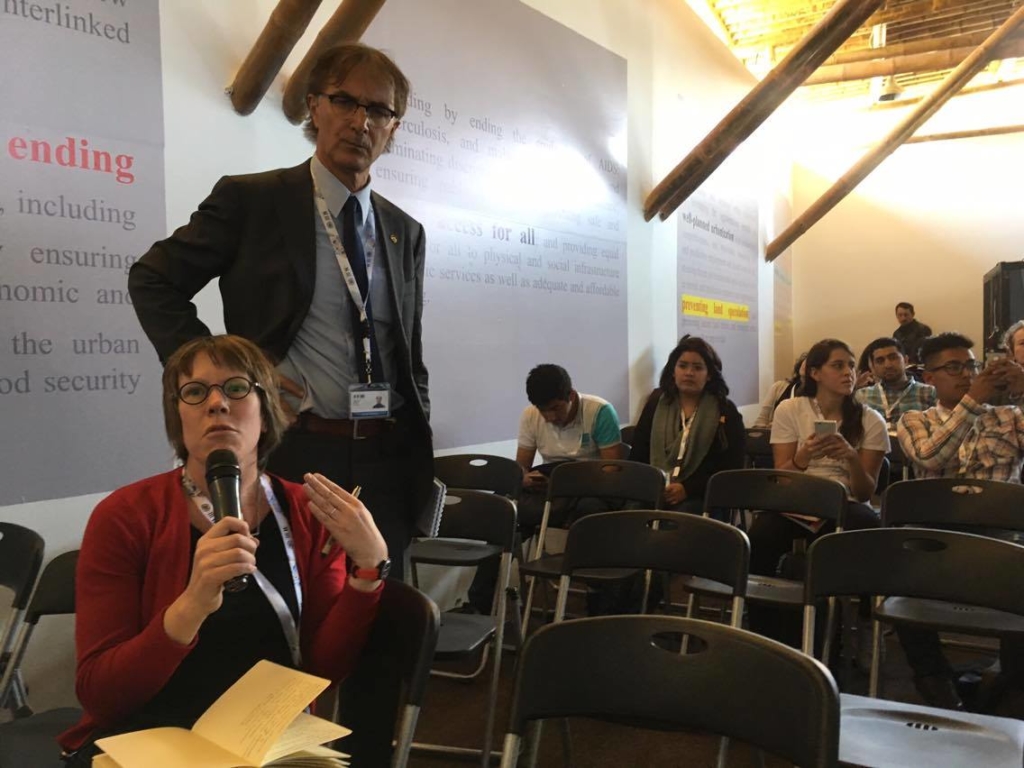
Another question raised was how the CityRAP tool promotes the participation of illiterate people from low capacity cities in Africa. DiMSUR’s team members explained that the tool methodology embraces the concept of Focal Points, who are local people, usually from the Municipality staff, that can engage with other locals by speaking the local languages and dialects in order to develop the participatory mapping and assessments and bridging data gaps, for instance.
